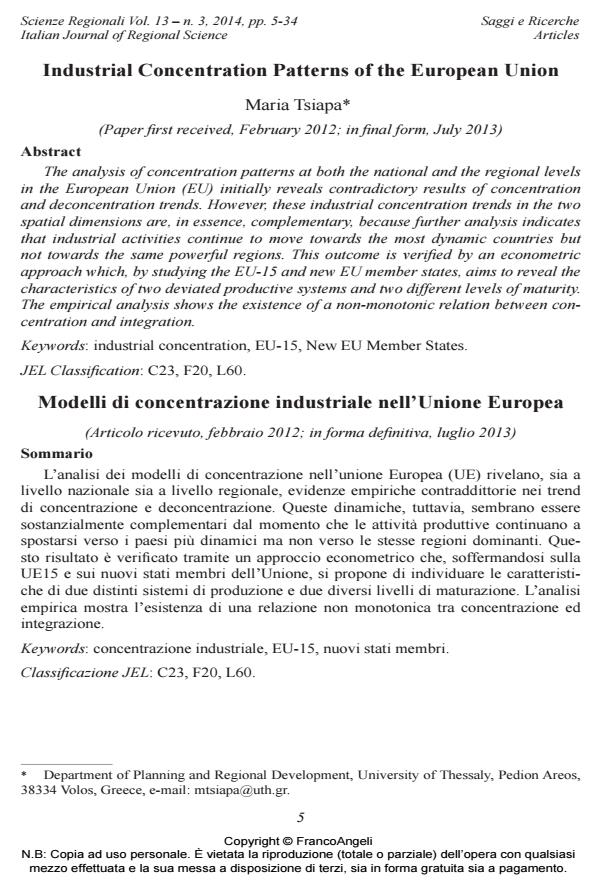Industrial Concentration Patterns of the European Union
Titolo Rivista SCIENZE REGIONALI
Autori/Curatori Maria Tsiapa
Anno di pubblicazione 2014 Fascicolo 2014/3
Lingua Inglese Numero pagine 29 P. 5-33 Dimensione file 888 KB
DOI 10.3280/SCRE2014-003001
Il DOI è il codice a barre della proprietà intellettuale: per saperne di più
clicca qui
Qui sotto puoi vedere in anteprima la prima pagina di questo articolo.
Se questo articolo ti interessa, lo puoi acquistare (e scaricare in formato pdf) seguendo le facili indicazioni per acquistare il download credit. Acquista Download Credits per scaricare questo Articolo in formato PDF

FrancoAngeli è membro della Publishers International Linking Association, Inc (PILA)associazione indipendente e non profit per facilitare (attraverso i servizi tecnologici implementati da CrossRef.org) l’accesso degli studiosi ai contenuti digitali nelle pubblicazioni professionali e scientifiche
The analysis of concentration patterns at both the national and the regional levels in the European Union (EU) initially reveals contradictory results of concentration and deconcentration trends. However, these industrial concentration trends in the two spatial dimensions are, in essence, complementary, because further analysis indicates that industrial activities continue to move towards the most dynamic countries but not towards the same powerful regions. This outcome is verified by an econometric approach which, by studying the EU-15 and new EU member states, aims to reveal the characteristics of two deviated productive systems and two different levels of maturity. The empirical analysis shows the existence of a non-monotonic relation between concentration and integration. .
L’analisi dei modelli di concentrazione nell’unione Europea (UE) rivelano, sia a livello nazionale sia a livello regionale, evidenze empiriche contraddittorie nei trend di concentrazione e deconcentrazione. Queste dinamiche, tuttavia, sembrano essere sostanzialmente complementari dal momento che le attività produttive continuano a spostarsi verso i paesi più dinamici ma non verso le stesse regioni dominanti. Questo risultato è verificato tramite un approccio econometrico che, soffermandosi sulla UE15 e sui nuovi stati membri dell’Unione, si propone di individuare le caratteristiche di due distinti sistemi di produzione e due diversi livelli di maturazione. L’analisi empirica mostra l’esistenza di una relazione non monotonica tra concentrazione ed integrazione.
Parole chiave:Concentrazione industriale, EU-15, nuovi stati membri.
Jel codes:C23, F20, L60.
- The impact of EU Eastern enlargement on urban growth and decline: New insights from Germany's Eastern border Bastian Heider, in Papers in Regional Science /2019 pp.1443
DOI: 10.1111/pirs.12407
Maria Tsiapa, Industrial Concentration Patterns of the European Union in "SCIENZE REGIONALI " 3/2014, pp 5-33, DOI: 10.3280/SCRE2014-003001